Rhinoplasty, commonly known as a nose job, is a transformative procedure that not only enhances facial aesthetics but can also improve breathing functionality.
Whether you’re looking to refine the shape of your nose, correct a deviated septum, or simply boost your self-confidence, understanding the intricacies of rhinoplasty is essential.
This guide will walk you through the entire process, from the initial consultation to post-op care, ensuring you are well-prepared for your journey to a new nose.
Key Takeaways
- Understand the differences between open and closed rhinoplasty to make an informed decision.
- Prepare for your consultation by knowing which questions to ask about the surgeon’s experience and your desired outcome.
- Learn how to get ready for surgery with a pre-surgery checklist to ensure the best possible results.
- Discover what to expect during the rhinoplasty procedure to ease any pre-surgery nerves.
- Know the essential steps for post-op care to foster a smooth recovery and maintain your new nose’s shape.
Your First Steps to a New Nose: Deciding on Rhinoplasty
When considering rhinoplasty, it’s crucial to start by understanding what this surgery entails and how it can transform not just your nose but your overall facial harmony. It’s a decision that should not be taken lightly, and being well-informed is your first step toward achieving the results you desire.
Understanding Rhinoplasty and Its Benefits
Rhinoplasty, commonly referred to as a nose job, is more than just a cosmetic procedure. It’s a transformative journey that can enhance your facial aesthetics and, for some, improve breathing function. This surgery can address a range of concerns, from reshaping the nose’s bridge, adjusting the nostrils, or refining the nasal tip to correcting a deviated septum.
Is Rhinoplasty the Right Choice for You?
Deciding to undergo rhinoplasty is a personal choice and should be based on your individual needs and goals. Ask yourself why you want the surgery and what you hope to achieve. If you’re looking for a confidence boost or need to correct a functional issue, rhinoplasty might be a suitable option. However, it’s important to have realistic expectations and understand that the goal is improvement, not perfection.
The Rhinoplasty Playbook: Procedure Explained
Rhinoplasty can be broken down into two main types: open and closed. Both have their advantages, and the right choice will depend on the complexity of the surgery and the specific changes you’re looking to make.
Open vs. Closed Rhinoplasty: Choosing Your Path
In an open rhinoplasty, a small incision is made across the columella—the strip of tissue separating the nostrils. This approach provides the surgeon with greater visibility and access to the nasal structure. Closed rhinoplasty, on the other hand, involves incisions within the nostrils, resulting in no visible scarring. Discuss with your surgeon which technique suits your case best.
Techniques Crafted for Your Unique Nose
Each rhinoplasty procedure is tailored to the patient’s facial structure and desired outcome. Whether it’s reducing a hump, refining the tip, or correcting asymmetry, your surgeon will employ specific techniques to achieve a natural-looking result that complements your overall facial features.
Pre-Op Wisdom: Gear Up for a Smooth Surgery
Proper preparation is key to a successful rhinoplasty. From pre-surgery instructions to what to expect on the day of the operation, being prepared will help ensure a smoother experience and recovery.
Consultation Checkpoints: Questions to Ask Your Surgeon
Before committing to rhinoplasty, you’ll want to have a detailed consultation with your surgeon. Here are some crucial questions to ask:
- How many rhinoplasty procedures have you performed?
- Can I see before-and-after photos of your previous work?
- What are the potential risks and complications?
- What can I expect in terms of recovery and aftercare?
- How do you handle revisions if I’m not satisfied with the results?
These questions will help you gauge the surgeon’s expertise and give you a clearer picture of the journey you’re about to embark on.
Getting Physically Ready: Pre-Surgery Checklist
Before surgery, there’s a checklist you’ll need to follow to ensure you’re physically prepared. This includes:
- Avoiding certain medications that can increase bleeding, like aspirin or ibuprofen, for two weeks before and after surgery.
- Stopping smoking well in advance, as smoking can delay healing and increase the risk of complications.
- Arranging for someone to drive you home after the procedure and stay with you for at least the first night.
Adhering to these steps is essential for a safe surgery and smooth recovery.
What Happens During Surgery
On the day of your rhinoplasty, you’ll be administered anesthesia to ensure your comfort during the procedure. Depending on your specific case and your surgeon’s preference, you may receive either general anesthesia or local anesthesia with sedation.
Once the anesthesia takes effect, your surgeon will make the incisions according to the chosen approach, either open or closed, and begin the delicate process of reshaping your nose. This could involve altering bone and cartilage, grafting tissue, or refining the nasal tip.
A Step-by-Step Glimpse Into Rhinoplasty
The rhinoplasty procedure typically follows these steps:
- Anesthesia is administered.
- Incisions are made inside the nostrils or across the columella, depending on the technique.
- The nose’s structure is reshaped to the desired contour.
- Incisions are closed with sutures.
- A splint is placed to support the new shape of the nose during the initial healing.
Understanding this process can help demystify what happens during the surgery and ease any apprehension you might have.
Critical Moments: What Surgeons Pay Attention To
During surgery, precision is paramount. Surgeons pay close attention to:
- The symmetry of the nose in relation to the rest of the face.
- The delicate balance between removing enough tissue to make a difference and maintaining enough to support the nose’s structure.
- Ensuring the airways are not compromised, allowing for not only an aesthetically pleasing result but also functional breathing.
These critical moments are where the surgeon’s skill and experience come into play.
Post-Op Success: Aftercare That Ensures the Best Results
After the surgery, following your surgeon’s aftercare instructions is crucial for the best outcome. This includes how to care for your surgical site, medications to take to aid healing and reduce the risk of infection, and when to return for follow-up appointments.
Caring for Your New Nose: The First 48 Hours
The first 48 hours post-surgery are critical. You’ll need to rest with your head elevated to reduce swelling and bleeding. It’s normal to feel congested due to the swelling and splints inside your nose. Pain is usually manageable with prescribed medication, and you should avoid blowing your nose to protect the delicate surgical work.
Long-Term Care: Nurturing Your Results
Long-term care involves being gentle with your new nose. Avoid strenuous activities and contact sports for at least six weeks. Sun protection is also important to prevent discoloration. Follow-up visits are crucial to monitor your healing and the progress of your new nasal contour.
Risk Radar: Understanding Potential Complications
As with any surgery, rhinoplasty comes with risks. Some potential complications include:
- Bleeding or infection.
- Difficulty breathing through the nose.
- Numbness around the nose.
- An unsatisfactory aesthetic result, potentially requiring revision surgery.
Being aware of these risks and discussing them with your surgeon can help you make an informed decision about undergoing rhinoplasty.
Common Concerns: What to Watch Out For
Even with a skilled surgeon, it’s important to be vigilant during your recovery. Some common concerns include swelling, bruising, and mild discomfort, which are all normal parts of the healing process. However, if you notice excessive bleeding, severe pain not controlled by medication, or signs of infection like fever or foul discharge, it’s crucial to contact your surgeon immediately.
When to Seek Help: Red Flags Post-Surgery
Most importantly, there are certain red flags you should never ignore after rhinoplasty:
- Sudden increase in swelling or bruising, especially if it’s only on one side.
- Sharp pain or a feeling of pressure that doesn’t go away with prescribed painkillers.
- Difficulty breathing that is not improving or is getting worse.
- Any signs of allergic reaction such as hives or difficulty breathing.
If you experience any of these symptoms, reach out to your surgeon as soon as possible to ensure your safety and the success of your surgery.
FAQs
How Long is the Recovery Process After Rhinoplasty?
The recovery process varies for each individual, but generally, patients can return to work and most daily activities within 1 to 2 weeks. However, full healing and the final shape of the nose can take up to a year to fully materialize. It’s a gradual process, so patience is key.
Can I Choose How My New Nose Will Look?
Yes, you can have a say in how your new nose will look, but it’s important to have realistic expectations. During your consultation, you’ll discuss your desired outcome with your surgeon, and they may use computer imaging to give you an idea of the potential results. However, the final result will depend on your unique anatomy and the technical limitations of surgery.
What Are the Limitations After Rhinoplasty Surgery?
After rhinoplasty, you’ll need to take special care to protect your nose. Limitations include avoiding strenuous exercise, heavy lifting, and contact sports for at least 6 weeks. You should also avoid wearing glasses that rest on the bridge of your nose for a similar period to prevent indentations.
How Do I Know If My Surgeon Is Qualified for Rhinoplasty?
To ensure your surgeon is qualified for rhinoplasty, check for board certification in plastic surgery or facial plastic surgery. Look for someone with extensive experience in rhinoplasty and don’t hesitate to ask for before-and-after photos of their past patients. Additionally, read reviews and consider getting recommendations from former patients.
Will Rhinoplasty Help with Breathing Issues?
Rhinoplasty can help with breathing issues if they are related to structural problems within the nose, such as a deviated septum or nasal valve collapse. During your consultation, discuss any breathing difficulties with your surgeon to determine if rhinoplasty can address these concerns.
Choosing to undergo rhinoplasty is a significant decision that can have a profound impact on your appearance and self-confidence. By understanding the procedure, preparing for surgery, and following through with proper aftercare, you can greatly enhance your chances of a successful outcome. Remember, the key to a satisfying rhinoplasty experience lies in selecting a qualified surgeon, having clear and realistic expectations, and taking good care of yourself before and after the surgery. With the right approach, your new nose can be a source of joy and confidence for years to come.
ACT NOW! GET A FREE CONSULTATION – TODAY ONLY!
CALL US NOW TO LEARN MORE ABOUT HOW A BROKEN NOSE IS REPAIRED BY A PLASTIC SURGEON! 346-413-9313
Don’t miss this exclusive opportunity to get expert advice and begin your journey towards a new, confident you. Texas Sinus and Snoring’s dedicated team is ready to help you achieve the results you’ve always wanted. Contact us today to schedule your free consultation and take the first step towards a better, more confident you!





